
Carl E. Guthrie (15 October 1905, St. Louis, Missouri - 23 April 1967, Los Angeles, California) was an American cinematographer.

Carl E. Guthrie (15 October 1905, St. Louis, Missouri - 23 April 1967, Los Angeles, California) was an American cinematographer.
He began as an assistant cameraman, working on films such as Howard Hawks's Tiger Shark (1932) with Tony Gaudio. He was known for films such as Janie (1944), Hotel Berlin (1945), Christmas in Connecticut (1945), Caged (1950), Lady Godiva of Coventry (1955), Too Much, Too Soon (1958), House on Haunted Hill (1959), [1] and Up Periscope (1959). [2]
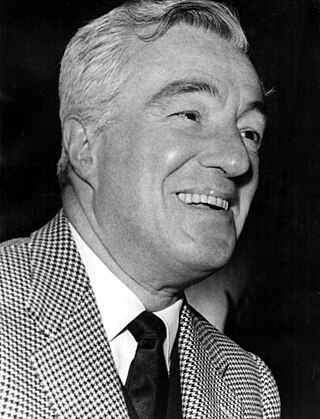
Vittorio De Sica was an Italian film director and actor, a leading figure in the neorealist movement.

Woodrow Wilson Guthrie was an American singer-songwriter and composer who was one of the most significant figures in American folk music. His work focused on themes of American socialism and anti-fascism. He inspired several generations both politically and musically with songs such as "This Land Is Your Land".

Steven Benjamin Goodman was an American folk and country singer-songwriter from Chicago. He wrote the song "City of New Orleans", which was recorded by Arlo Guthrie and many others including John Denver, The Highwaymen, and Judy Collins; in 1985, it afforded Goodman the Grammy songwriter award for best country song, as performed by Willie Nelson. Goodman had a small but dedicated group of fans for his albums and concerts during his lifetime. His most frequently sung song, "Go Cubs Go", is about the Chicago Cubs. Goodman died of leukemia in September 1984.

Carl August Sandburg was an American poet, biographer, journalist, and editor. He won three Pulitzer Prizes: two for his poetry and one for his biography of Abraham Lincoln. During his lifetime, Sandburg was widely regarded as "a major figure in contemporary literature", especially for volumes of his collected verse, including Chicago Poems (1916), Cornhuskers (1918), and Smoke and Steel (1920). He enjoyed "unrivaled appeal as a poet in his day, perhaps because the breadth of his experiences connected him with so many strands of American life". When he died in 1967, President Lyndon B. Johnson observed that "Carl Sandburg was more than the voice of America, more than the poet of its strength and genius. He was America."

James Neville Mason was an English actor. He achieved considerable success in British cinema before becoming a star in Hollywood. He was the top box-office attraction in the UK in 1944 and 1945; his British films included The Seventh Veil (1945) and The Wicked Lady (1945). He starred in Odd Man Out (1947), the first recipient of the BAFTA Award for Best British Film.

Carl Reiner was an American actor, stand-up comedian, director, screenwriter, and author whose career spanned seven decades. He was the recipient of many awards and honors, including 11 Primetime Emmy Awards, a Grammy Award, and the Mark Twain Prize for American Humor. He was inducted into the Television Hall of Fame in 1999.

The Rank Organisation is a British entertainment conglomerate founded by industrialist J. Arthur Rank in April 1937, Rank also served as the company chairman. It quickly became the largest and most vertically integrated film company in the United Kingdom, owning production, distribution, and exhibition facilities as well as manufacturing projection equipment and chairs. It also diversified into the manufacture of radios, TVs and photocopiers. The company name lasted until February 1996, when the name and some of the remaining assets were absorbed into the newly structured Rank Group plc. The company itself became a wholly owned subsidiary of Xerox and was renamed XRO Limited in 1997.
Charles Keating was an English actor.
Frank Sydney Box was a British film producer and screenwriter, and brother of British film producer Betty Box. In 1940, he founded the documentary film company Verity Films with Jay Lewis.

Sir William Tyrone Guthrie was an English theatrical director instrumental in the founding of the Stratford Festival of Canada, the Guthrie Theater in Minneapolis, Minnesota, and the Tyrone Guthrie Centre at his family's ancestral home, Annaghmakerrig, near Newbliss in County Monaghan, Ireland. He is famous for his original approach to Shakespearean and modern drama.
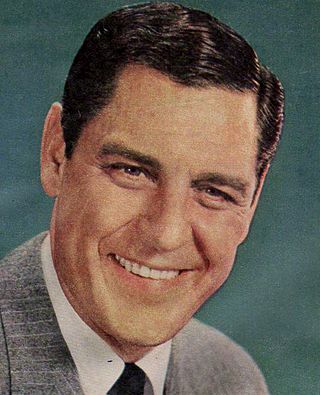
Craig Stevens was an American film and television actor, best known for his starring role on television as private detective Peter Gunn from 1958 to 1961.

Jack Henderson Clement was an American singer/ songwriter and record and film producer. He was producer and engineer for Sam Phillips at Sun Records in its early days, and worked with Carl Perkins, Roy Orbison, Jerry Lee Lewis and Johnny Cash.
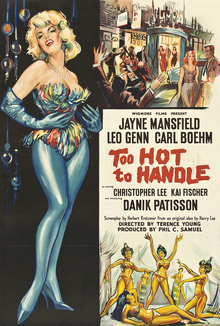
Too Hot to Handle is a 1960 British neo-noir crime thriller film directed by Terence Young and starring Jayne Mansfield, Leo Genn and Carl Boehm. The screenplay was by Herbert Kretzmer from a story by Harry Lee.

William Grigs Atkinson, known professionally as Paul Cavanagh, was an English film and stage actor. He appeared in more than 100 films between 1928 and 1959.

Richard Dominic Stabile was an American jazz saxophonist, clarinetist, and bandleader.

A Tale of Five Cities is a 1951 British-Italian international co-production comedy drama film directed by Romolo Marcellini, Emil E. Reinert, Wolfgang Staudte, Montgomery Tully, Irma von Cube and Géza von Cziffra. The five cities cited in the title are: Rome, Paris, Berlin, London, and Vienna.
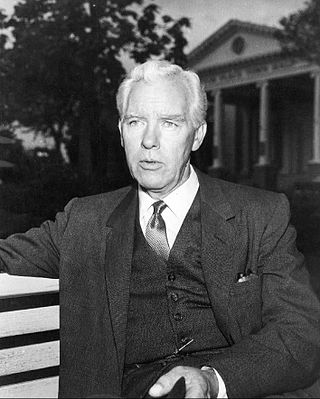
Warner Anderson was an American actor.
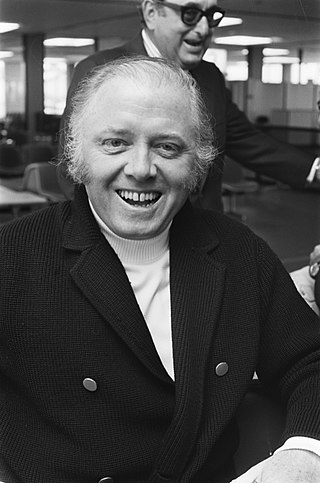
Richard Samuel Attenborough, Baron Attenborough, was an English actor, film director, and producer.

A copy boy is a typically young and junior worker on a newspaper. The job involves taking typed stories from one section of a newspaper to another. According to Bruce Guthrie, the former editor-in-chief of the Herald Sun who began work there as a copy boy in 1972:
Reporters typed their stories on slips of butcher's paper...then a copy boy ran the story into the neighbouring subs' [sub-editor's] room, hence the cry of 'copy'. Each slip of the story had about six carbon copies...stapled together and it was the job of the copy boy - or girl - to separate the original and run it to the subs, and then separate the carbons for distribution.
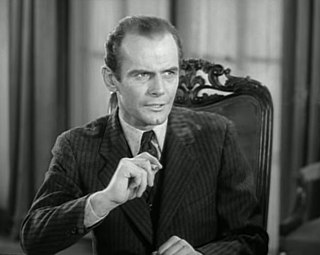
Peter George Lynn was an American actor and writer.